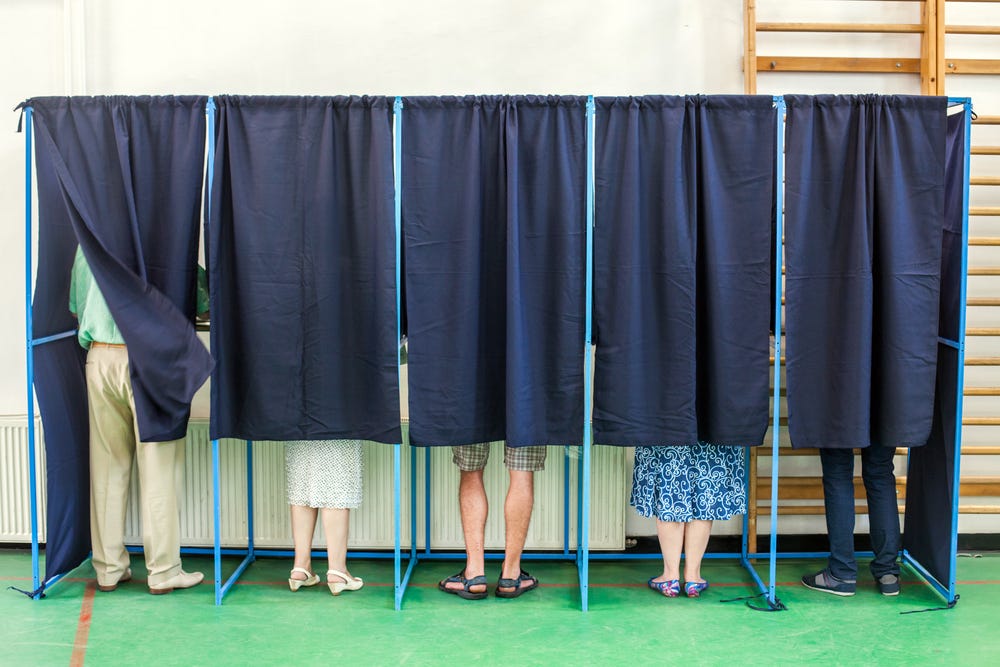Latest news about Bitcoin and all cryptocurrencies. Your daily crypto news habit.

The blockchain bears all kinds of potential for improving human systems.
Most often we hear of that potential in reference to financial services and banking systems. But the human arena that could perhaps be most improved by the blockchain is voting.
Over the course of the previous election cycle, talk of fraud, fake news, and “system rigging” was rampant. And for good reason.
Fake news was detrimental. Our existing mechanisms did prove susceptible to outside infection. It became clear to everyone that something needs to change.
And that’s where the blockchain comes in: by moving our voting systems to the blockchain — something several countries and states have experimented with already — we can ameliorate a system exposed as insufficient multiple times over.
Here’s how:
Using the blockchain for voting ensures a necessary level of transparency.
The chief benefit of switching our voting systems over to the blockchain is the enhanced level of transparency the blockchain allows for.
The blockchain would — definitively — preclude bad actors from cheating the system. It would make sure people do not vote twice, since we’d have an immutable record of their vote and their identity. And no one would ever be able to delete votes, because, again, the blockchain is immutable. Those charged with counting votes would have a final record of every vote counted that could be checked by regulators or auditors at any time.
On the blockchain, everything is both immutable and verifiable. Also important, however, is the fact that results can be encrypted, which would encourage transparency while at the same time maintaining a crucial sense of privacy.
The blockchain will allow for quicker results.
Results entered and stored on the blockchain are not just immutable and transparent, however — they’re also immediately available.
That means conducting our elections on the blockchain is not only safer but also more efficient.
If you compare this to the way we conduct elections presently, the differences are stark. It currently takes hours and sometimes days to count votes after elections — and sometimes we muddle up the results on account of human or machine error, which of course results in the process taking even longer.
The blockchain, however, offers a reality in which that human error is taken out of the equation and results are counted immediately.
Imagine knowing election results immediately after an election is over. That’s what the blockchain can do.
The blockchain enables people to more systematically verify information like news articles are reputable and valid.
Our elections consist of more processes and functions than the tallying of votes. When we speak of elections, we must also speak of everything that happens before election day — such as the dissemination and discussion of information and news.
That is perhaps where our voting system was proven to be most vulnerable during this last election cycle. Users on social media sites are to this day exposed regularly to pictures and articles that, to an undiscerning eye, look real. Readers are left to their own devices as far as determining whether or not something is, in fact, authentic.
The blockchain promises to enable us with the power to verify which sources of news are reputable and verifiable.
It can serve as an immutable source of data against which news sources can be checked. If we stored this sort of data on the blockchain, for example, a user on Facebook could look up an author or site they come across and determine whether or not that author or site publishes verifiably true or patently false information. That record would live on the blockchain for all to reference.
Individual articles, even, could be up-voted or down-voted in accordance with whether users can confirm the content is accurate. This, in effect, gives people more tools with which to practice smart social media consumption habits.
The blockchain could be used to improve voting processes inside private companies and organizations, too.
What becomes clear is the more you investigate the blockchain as a potential mechanism for governing voting processes, the more you find its application extends further than municipal or public elections.
Individual companies and organizations could reap the same benefits by utilizing the blockchain internally.
For example, companies could use tokens to grant employees and stakeholders voting rights. The more coins an employee or voter is granted, the more weight their potential vote holds. Granting tokens is also a way to incentivize good behavior, such as consistent accuracy.
Companies like Ethereum are already experimenting with this kind of structure — a structure which, in addition to increasing transparency and efficiency, also diversifies power.
The technology we need to make these improvements is already here.
Of course, the blockchain will not prove useful in ameliorating our voting processes unless those in power decide to implement it.
The good news? The technology to make that happen already exists. And we see countries and states around the world experimenting with that technology — hosting elections on the blockchain, using the blockchain to store and track voting data, and verifying news sources by way of a decentralized consensus.
There is more work to be done before this is a reality, sure. But the technology is here. And we know what awaits us should we decide to make transparency, efficiency, and safety a priority: a new future.
This Is What The Future Of Voting Looks Like was originally published in Hacker Noon on Medium, where people are continuing the conversation by highlighting and responding to this story.
Disclaimer
The views and opinions expressed in this article are solely those of the authors and do not reflect the views of Bitcoin Insider. Every investment and trading move involves risk - this is especially true for cryptocurrencies given their volatility. We strongly advise our readers to conduct their own research when making a decision.